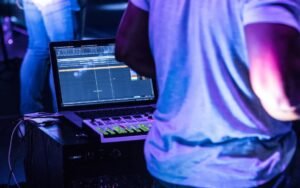Neural Network Notes
Neural networks are a fundamental concept in artificial intelligence and machine learning. They are designed to mimic the way the human brain works and are used in various applications such as image and speech recognition, natural language processing, and autonomous vehicles. This article provides an overview of neural networks and their key components.
Key Takeaways
- Neural networks imitate the human brain to solve complex problems.
- They consist of interconnected layers of artificial neurons called nodes.
- Each node takes inputs, performs calculations, and passes the output to the next layer.
- Neural networks learn through a process called training, adjusting the weights of connections to improve performance.
- Deep learning is a subset of neural networks that involves multiple hidden layers.
A neural network is made up of layers of nodes, also known as artificial neurons or processing units. These nodes are connected to each other through weighted connections, forming a network. Each node takes inputs from the previous layer, performs calculations using weighted sums, and passes the output to the next layer. The last layer produces the final result of the network’s computation. *Neural networks can have multiple layers, allowing for more complex and abstract representations of data.*
Components of a Neural Network
Neural networks consist of several key components:
- Input Layer: The first layer that receives input data and passes it to the next layer.
- Hidden Layers: Layers between the input and output layer that perform calculations.
- Output Layer: The final layer that produces the network’s output.
- Weights and Biases: Each connection between nodes has a weight and a bias, which determine the strength and influence of the connection.
- Activation Function: Applied to the nodes’ weighted sum to introduce non-linearity and allow for complex computations.
- Backpropagation: The process of adjusting weights and biases during training to minimize the difference between the network’s output and the desired output.
Deep learning is a type of neural network that involves multiple hidden layers. It has revolutionized many fields by achieving state-of-the-art results in tasks such as image recognition, natural language processing, and autonomous driving. *The power of deep learning lies in its ability to automatically learn hierarchical representations of data, capturing intricate patterns and relationships.*
Advantages and Limitations
Neural networks offer several advantages:
- Ability to learn and generalize from large amounts of data.
- Flexibility in handling complex data structures.
- Ability to perform parallel computations.
- Resilience to noisy or incomplete data.
However, they also have some limitations:
- Require a large amount of training data and computational resources.
- Black box nature makes it challenging to interpret the reasoning behind their decisions.
- Prone to overfitting if not properly regularized.
Applications of Neural Networks
Neural networks have diverse applications across various industries:
| Industry | Application |
|---|---|
| Medical | Disease diagnosis, medical image analysis |
| E-commerce | Recommendation systems, customer segmentation |
*Neural networks also hold promise in areas such as finance, cybersecurity, and social media analysis.*
Future Directions
As research and development in the field of neural networks continue to progress, several exciting directions are emerging:
- Improvement of training algorithms and optimization techniques.
- Exploration of novel network architectures and activation functions.
- Integration of neural networks with other AI techniques like reinforcement learning.
These advancements will further enhance the capabilities and performances of neural networks, paving the way for innovative solutions in various domains.
Conclusion
Neural networks are a fundamental building block of artificial intelligence and machine learning. Their ability to mimic the human brain and solve complex problems has revolutionized many fields. With further advancements, neural networks have the potential to drive significant innovation and transformation in a wide range of industries.

Common Misconceptions
Neural Networks are the Same as the Human Brain
Neural networks are often associated with the human brain due to their inspiration drawn from its structure. However, it is crucial to understand that neural networks are simplified mathematical models and do not possess the complexity or capability of a human brain.
- Neural networks lack consciousness and self-awareness.
- Neural networks cannot perform general cognitive tasks like humans.
- Neural networks require extensive training specific to a task.
Neural Networks Always Provide Accurate Results
While neural networks can achieve impressive performance in various applications, it is a misconception that they always provide accurate results. Neural networks are susceptible to errors and may produce incorrect outputs, particularly when encountering unfamiliar or distorted data.
- Neural networks may misclassify certain inputs.
- Neural networks can be sensitive to noise or outliers in the data.
- Insufficient training data can lead to poor performance of neural networks.
Neural Networks Operate Independently without Human Intervention
Although neural networks are capable of making decisions and predictions autonomously, they still require significant human involvement throughout their lifecycle. Human intervention is necessary for designing, training, evaluating, and fine-tuning neural networks to ensure optimal performance.
- Human experts are required to define suitable input features for the network.
- Training data needs to be carefully labeled or annotated by humans.
- Regular monitoring of network performance is essential to identify and overcome potential issues.
Neural Networks Can Mimic Human Creativity
While neural networks are capable of generating outputs based on patterns and examples from training data, their ability to mimic human creativity is limited. Neural networks lack the intuition, insight, and emotional depth that humans possess, making it challenging for them to replicate truly human-like creative processes.
- Neural networks lack originality in generating new ideas or concepts.
- The creative outputs of neural networks are heavily influenced by the training data they have been exposed to.
- Human interpretation and evaluation are often required to assess the creativity of neural network outputs.
Neural Networks are Always the Best Approach for All Problems
Although neural networks have gained significant popularity and achieved remarkable success across various domains, it is important to recognize that they may not always be the best solution for every problem. Different machine learning algorithms and techniques should be considered based on the specific task requirements and available resources.
- Other algorithms may outperform neural networks in certain domains.
- Neural networks are computationally expensive and resource-intensive.
- The interpretability and explainability of neural networks may be limited compared to other approaches.

Exploring Different Neural Network Architectures
When building neural networks, there are various architectures to consider. Each architecture has its unique approach to organizing and connecting the network’s layers. In this article, we will explore ten different neural network architectures and delve into their strengths and applications.
The Feedforward Architecture
The feedforward architecture is one of the simplest neural networks, with information flowing only in one direction, from the input layer to the output layer. It is commonly used for tasks such as image classification and speech recognition.
The Convolutional Neural Network (CNN)
CNNs are particularly effective in image and video processing tasks. They utilize a series of convolutional layers and pooling layers to extract relevant features from the input data. CNNs have greatly advanced the field of computer vision.
The Recurrent Neural Network (RNN)
RNNs are designed to process sequential data, such as text or speech, where the order of the data is crucial. They are capable of encoding past information and using it to make predictions. RNNs find applications in machine translation and sentiment analysis.
The Long Short-Term Memory (LSTM)
LSTMs are a type of RNN that can overcome the vanishing gradient problem. They allow for the learning of long-term dependencies in sequential data. LSTMs have become a popular choice for tasks like speech recognition and text generation.
The Generative Adversarial Network (GAN)
GANs consist of two competing networks: a generator and a discriminator. The generator aims to produce realistic data (e.g., images) while the discriminator attempts to differentiate the generated data from real data. GANs have revolutionized image synthesis and style transfer.
The Autoencoder
Autoencoders are unsupervised learning models used for dimensionality reduction and data compression. They consist of an encoder, which transforms the input into a latent representation, and a decoder, which reconstructs the original input from the latent space. Autoencoders have applications in anomaly detection and denoising.
The Deep Belief Network (DBN)
DBNs are composed of multiple layers of restricted Boltzmann machines (RBMs) stacked on top of each other. They are trained in a greedy layer-wise manner before fine-tuning. DBNs are often used for collaborative filtering and recommendation systems.
The Radial Basis Function Network (RBFN)
RBFNs function by fitting a set of radial basis functions centered around prototypes to the input data. They are well-suited for function approximation and pattern classification tasks. RBFNs have been successfully employed in financial time series analysis and medical diagnosis.
The Hopfield Network
Hopfield networks are recurrent neural networks with binary threshold units. They are primarily used for associative memory tasks, allowing for pattern recall and completion. Hopfield networks find applications in image recognition and optimization problems.
The Self-Organizing Map (SOM)
SOMs are unsupervised learning models that map input data onto a low-dimensional grid of neurons. They are widely used for clustering and visualization of high-dimensional data. SOMs have been applied in areas such as fraud detection and customer segmentation.
Neural networks have revolutionized many fields of study with their ability to learn from data and make predictions. Whether it’s image recognition, text generation, or pattern classification, there is likely a neural network architecture that is specifically suited to the task at hand. By understanding the different architectures available, researchers and practitioners can continue to push the boundaries of artificial intelligence.
Frequently Asked Questions
What is a neural network?
A neural network is a computational model inspired by the human brain. It consists of interconnected artificial neurons that process and transmit information to perform complex tasks such as pattern recognition, data clustering, and prediction.
How does a neural network work?
Neural networks work by passing data through multiple layers of interconnected neurons. Each neuron receives inputs, applies a weighted sum of those inputs, and passes the result through an activation function. This process repeats layer by layer until the network produces an output.
…




